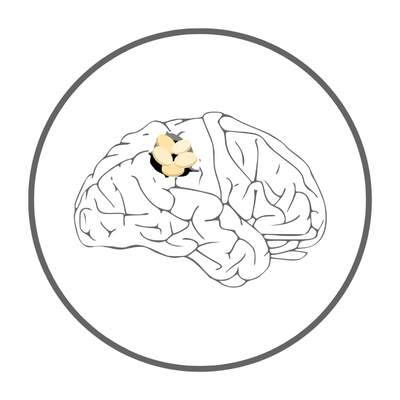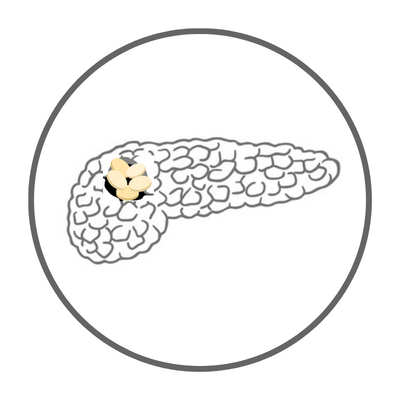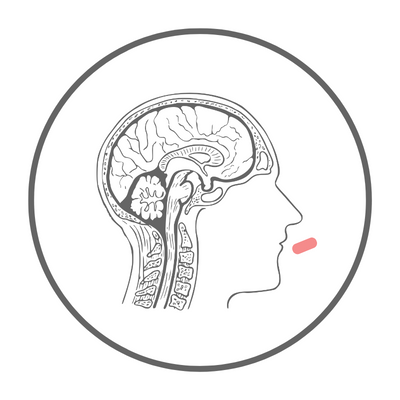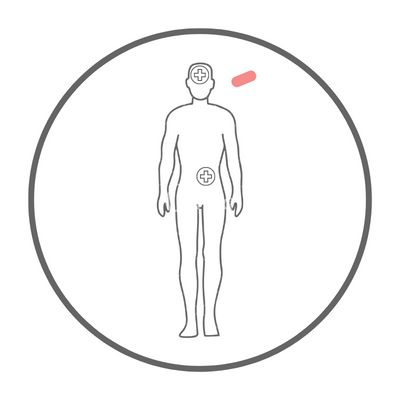TSCA-001 | Spinocerebellar Ataxia Treatment


Curing Rare Diseases
- Rare Diseases affect so few people that trying to cure them makes little economic sense without public incentives and special regulatory benefits.
- Our mission is to develop orphan drugs to treat rare diseases chosen for their low probability of survival due to the lack of effective treatments, the presence of few competitors offering objectively inferior products based on key medical metrics, and the possibility of rapidly gaining market share via licensing agreements with global pharma partners.
Spinocerebellar Ataxia (SCA) – Spinocerebellar Atrophy Syndrome
- Spinocerebellar ataxia (SCA) is a rare disease that encompasses a group of conditions with similar symptoms. These conditions can involve symptoms related to spinal cord and cerebellar abnormalities.
- SCA is primarily a dominantly inherited neurodegenerative disease caused by specific genetic sequence abnormalities. It has a 50% genetic transmission rate and typically manifests in individuals during their adulthood, between the ages of 30 to 50. SCA predominantly affects the cerebellum, spinal cord, and brainstem, leading to coordination impairments. Patients often require wheelchair assistance approximately 10 to 15 years after symptom onset.
- One of the most prevalent subtypes of SCA is SCA3, also known as Machado-Joseph disease (MJD).
-
It is estimated that approximately 3 individuals out of every 100,000 worldwide suffer from SCA. In the United States, an estimated 15,000 to 20,000 people are affected, with Taiwan’s Ministry of Health and Welfare reporting 1,534 cases as of August 2023.
-
Lack of Effective Treatment: Currently, there is no effective treatment for spinocerebellar ataxia. Medical management primarily focuses on addressing symptoms such as slow movements, tremors, muscle spasticity, limb stiffness, muscle cramps, and depression to improve the patient’s quality of life.
-
High Fatality Rate: Patients with spinocerebellar ataxia experience a gradual deterioration of their physical functions, often leading to fatality. Life expectancy may be correlated with the level of care provided, although some patients may experience a rapid decline in health shortly after symptom onset.
Our Innovative Approach
Using Small Molecule Drugs as Key Therapy
The primary cause of Spinocerebellar Ataxia Type 3 (SCA3) is the excessive repetition of the CAG sequence on the ataxin-3 (ATXN3) gene, leading to the formation of mutated ATXN3 protein. This mutated protein undergoes a proteolytic mechanism resulting in the production of small toxic fragments.
We have discovered that kynurenine metabolism plays a crucial role in the generation and regulation of these toxic fragments. We have demonstrated that the function of TSCA-001 is to modulate the early metabolic pathway of kynurenine, reducing the expression of tryptophan 2,3-dioxygenase (TDO2) and subsequently decreasing the production of the downstream neurotoxic product, quinolinic acid (QA). Furthermore, through the regulation of TDO2, TSCA-001 also reduces the levels of active calpain, an essential enzyme involved in the degradation of mutated ATXN3 protein. This reduction ultimately decreases the generation of toxic fragments and associated neurotoxicity.
Enhancing Efficacy through Targeted Drug Delivery Systems
The active small molecule drug TSCA-001 possesses high permeability, enabling it to penetrate the blood-brain barrier. Through the design of its formulation, it can achieve a higher concentration of the drug within targeted therapeutic organs, such as the brain (both the cerebrum and cerebellum).
Product Profile
Product Name
TSCA-001
Disease
Spinocerebellar Ataxia (SCA) – Spinocerebellar Atrophy Syndrome
Target Market
United State, European Union, Taiwan, China and Japan
Market Size
approximately USD 0.3 billion in United State
Competition Size
Lack of Effective Treatment Methods, Symptom Relief, and Disease Progression Slowdown, but No Symptom Reversal
Objective Size
aiming to secure a 15% market share through direct competition.
Mechanism of Action for TSCA-001
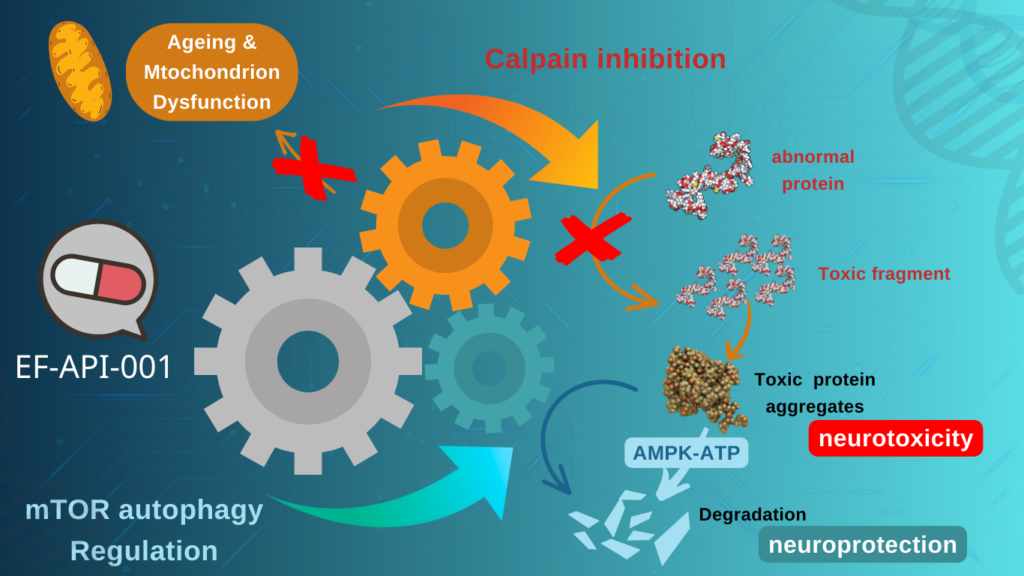
EF-API-001 Enhances Cerebellar Purkinje Cell Proliferation and Increases Neuronal Synaptic Integrity
Purkinje cells are neurons located in the cerebellar cortex and are the only neurons in the cerebellar cortex that transmit impulses.
- Cerebellar tissue sections of the mice were stained with calbindin (green, Alexa Fluor 488 probed) to label the Purkinje cells in cerebellar lobes III–V. The representative images and zoomed parts of Purkinje cells are shown. Purkinje cells without fragmented neurites are indicated by arrows.
- In mice with spinocerebellar ataxia, apoptosis of Purkinje cells is a pronounced symptom (as seen in SCA3 and SCA3-V groups in the figures). The death of Purkinje cells leads to the loss of balance and motor function in SCA3 mice.
- There were more observed Purkinje cells with non-fragmented neurites in WT and SCA3-EF animals (arrows indicated) compared to SCA3-V or SCA3 groups.
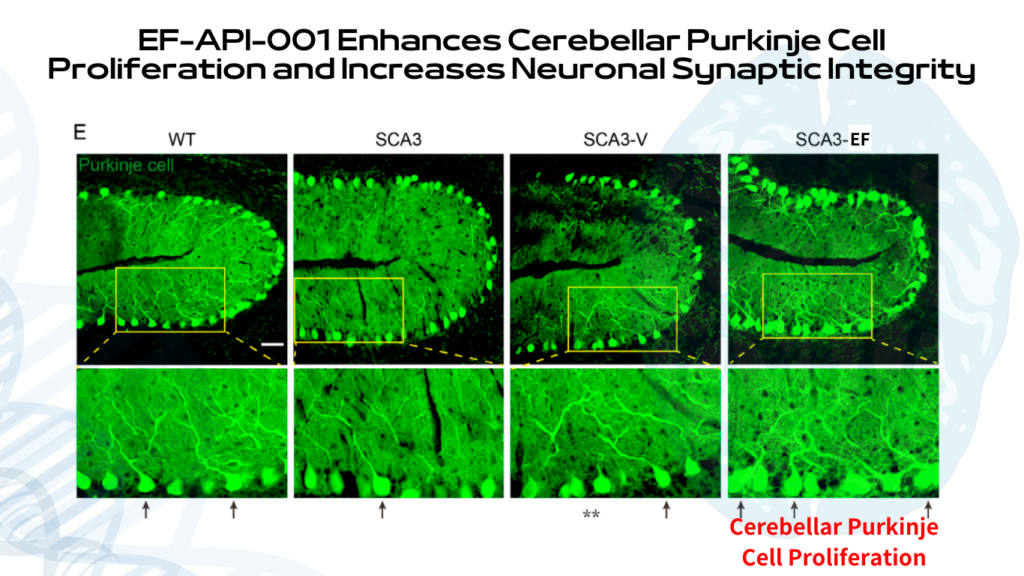
EF-API-001 Significantly Benefited the Motor Function in SCA3 MJD84.2 Transgenic Mice
- Representative images of footprint patterns displaying the gait of EF-API-001 administered SCA3 mice were similar to WT animals at the fifth week (28-week-old mice). Based on the 5 weeks’ footprinting test, SCA3-EF group presented improved coordination with shorter footprint overlap and longer stride length than vehicle or non-treated animals. Moreover, the long front and the hind base width in SCA3 and SCA3-V groups were presented. The 5 weeks of EF-API-001 treatment made a significant improvement on balance of SCA3 mice.
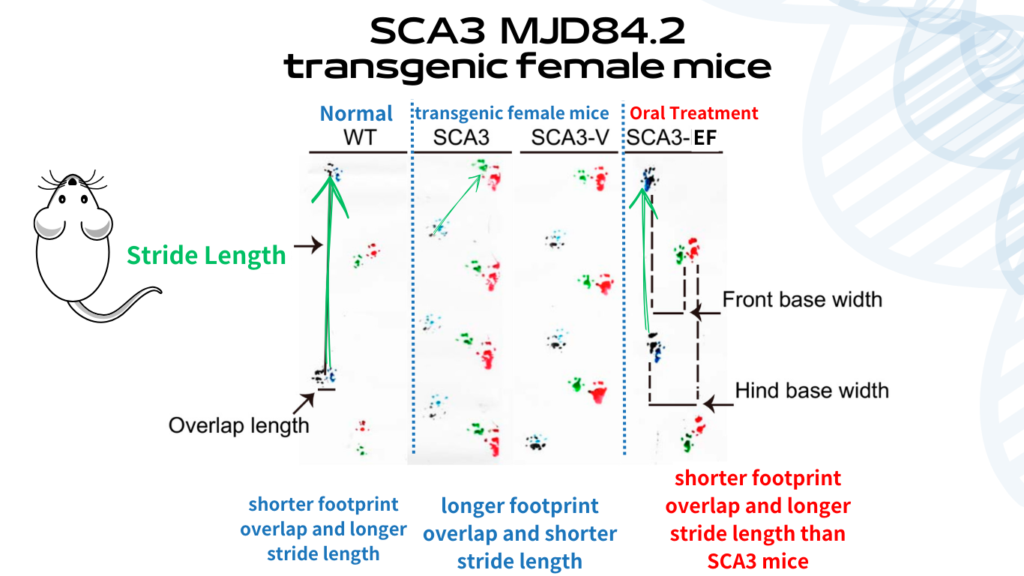
Patent Portfolio
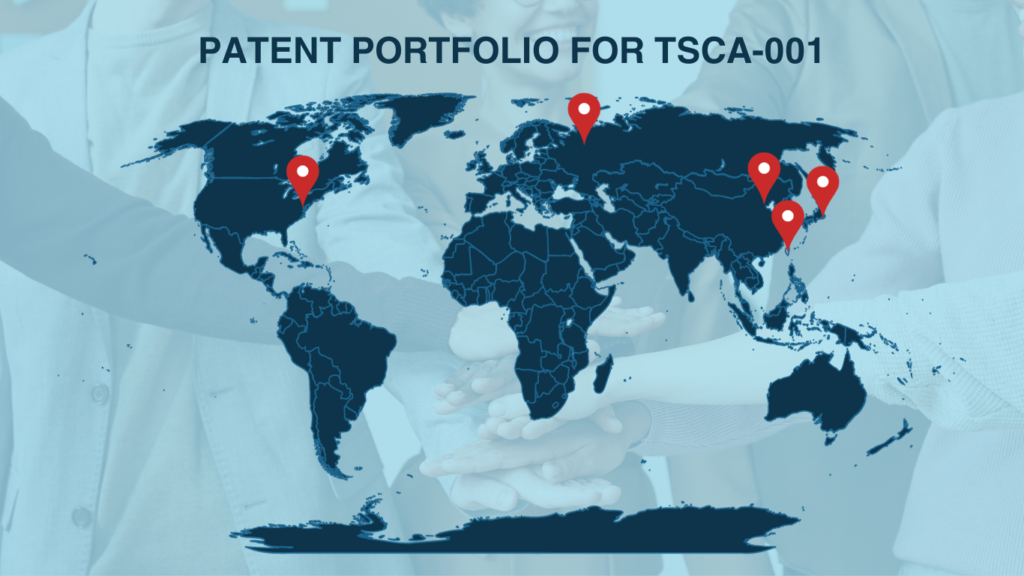
Publications
- 2022 | Anti-Excitotoxic Effects of N-Butylidenephthalide Revealed by Chemically Insulted Purkinje Progenitor Cells Derived from SCA3 iPSCs
- 2021 | n-Butylidenephthalide Modulates Autophagy to Ameliorate Neuropathological Progress of Spinocerebellar Ataxia Type 3 through mTOR Pathway
- 2017 | Human Olfactory Ensheathing Cell Transplantation Improves Motor Function in a Mouse Model of Type 3 Spinocerebellar Ataxia
Partnering And Collaboration
EFB is looking for the opportunity to cooperate with international pharmaceutical companies or venture capitals.
Please mail us on efbiotech@efbiotech.com

